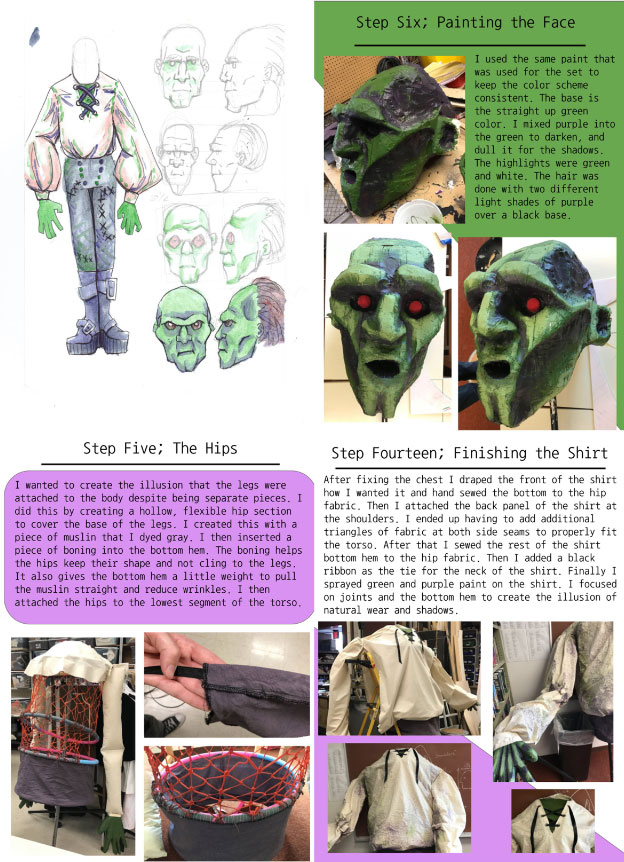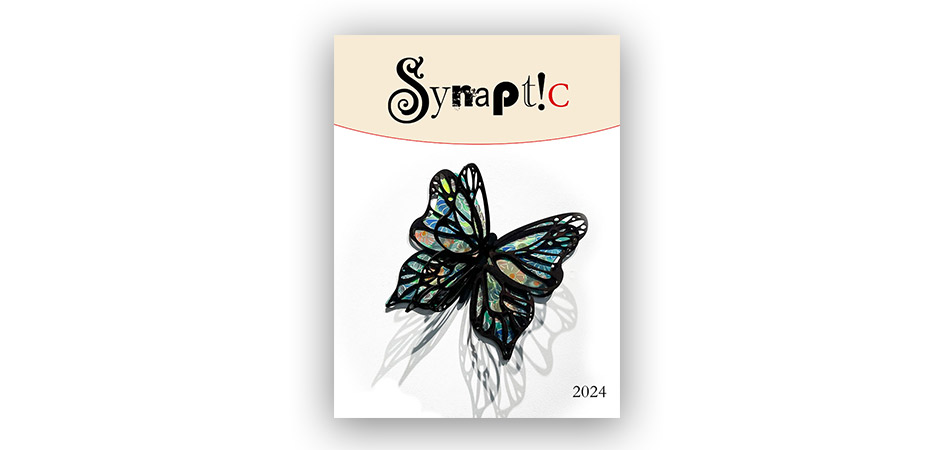
Artwork Selections
By Various Artists
Gunner Hutton ’25
ART 365: Glassblowing II
Project: Engage in the techincal process of putting a hole through the glass form. It is an interesting and complex form with two necks and the offset hole going through the vessel’s body. The sweeping movement of the darker color around the form adds to the presentation.
-Professor Brian Roberts
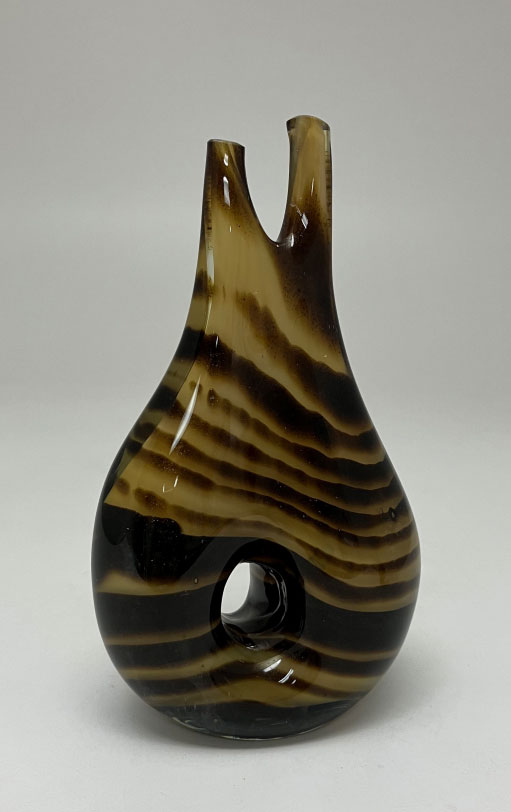
Gunner Hutton ’25
ART 252: Painting: Traditional to Digital Approaches
This was a traditional landscape painting assignment where students were to mix their limited palette colors to match the colors they observe outside in the landscape. Working from real life observation, students wrestled with the ever-changing light and shadow as time passed. Gunner captured the beauty of the subtle light and shadow found in the manicured garden outside of Jordan Hall.
-Professor Mathew Kelly
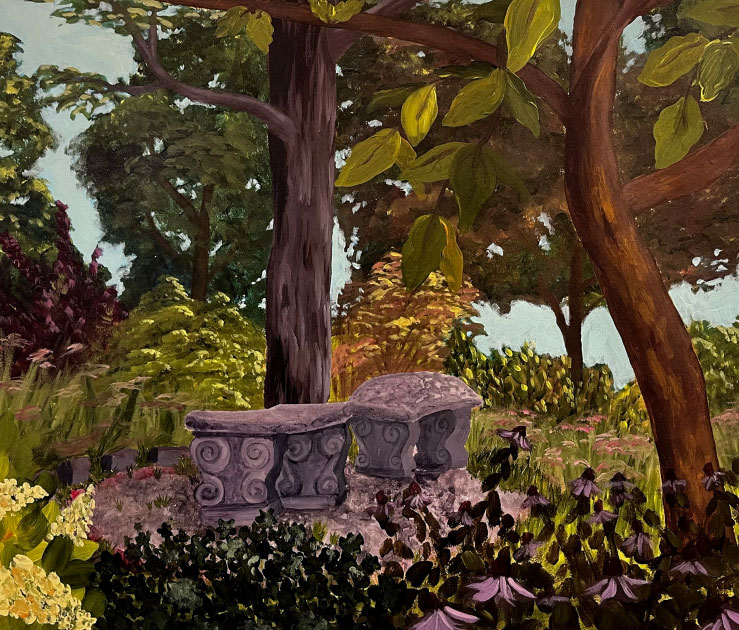
Callie Clark ’23
ART 362: Ceramics II
Project: Throw at least 8 plates of various sizes. At least one will have an enhanced surface from carving. One aspect that draws attention is how Callie glazed the plate to seperate the forground from the mountains in the background.
-Professor Brian Roberts
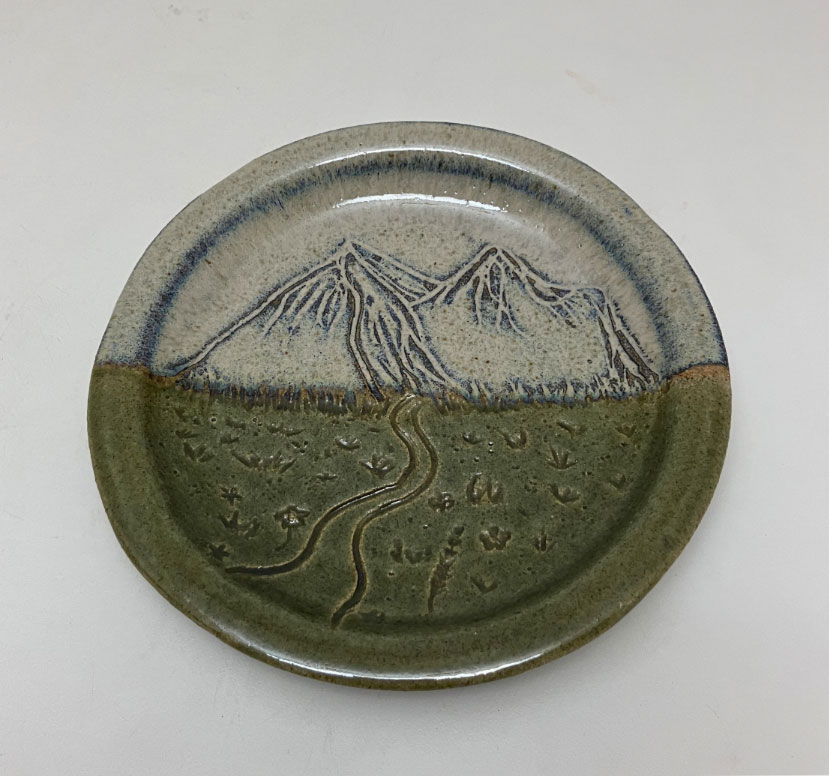
Kaylee Peiffer ’25
ART 252: Painting: Traditonal to Digital Approaches
This piece was for the Out of the Box assignment where students were to use a shaped canvas that related to their content rather than the traditional rectangle. Kaylee used the laser cutter to create these forms. A silhouette of a butterfly for the base where she painted a dense grove of flowers, then the lined form of the butterfly to show pattern laid on top, then another lined form to link it to flight. Additionally, she took all of the little pieces from the wings and built the caterpillar and chrysalis from them. A beautiful integration of form and materials.
-Professor Mathew Kelly
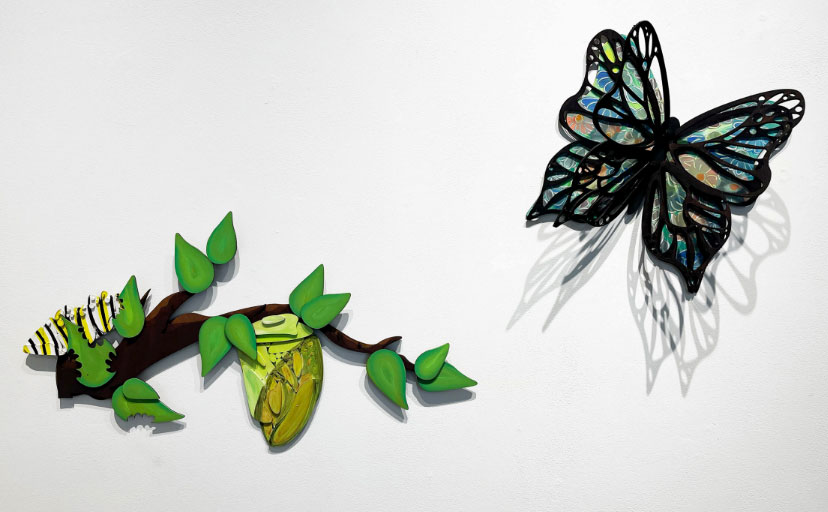
Fynn Wadsworth ’25
ART 252: Painting: Traditonal to Digital Approaches
This image was for the Slap-Dash assignment where students were to emphasize brush strokes and texture. Fynn chose to work on a three-foot square stretched canvas. He painted the stairway in Lubbers at the center of the image and placed it in an invented forest-like environment capturing the eerie feeling of the basement of Lubbers at night.
-Professor Mathew Kelly
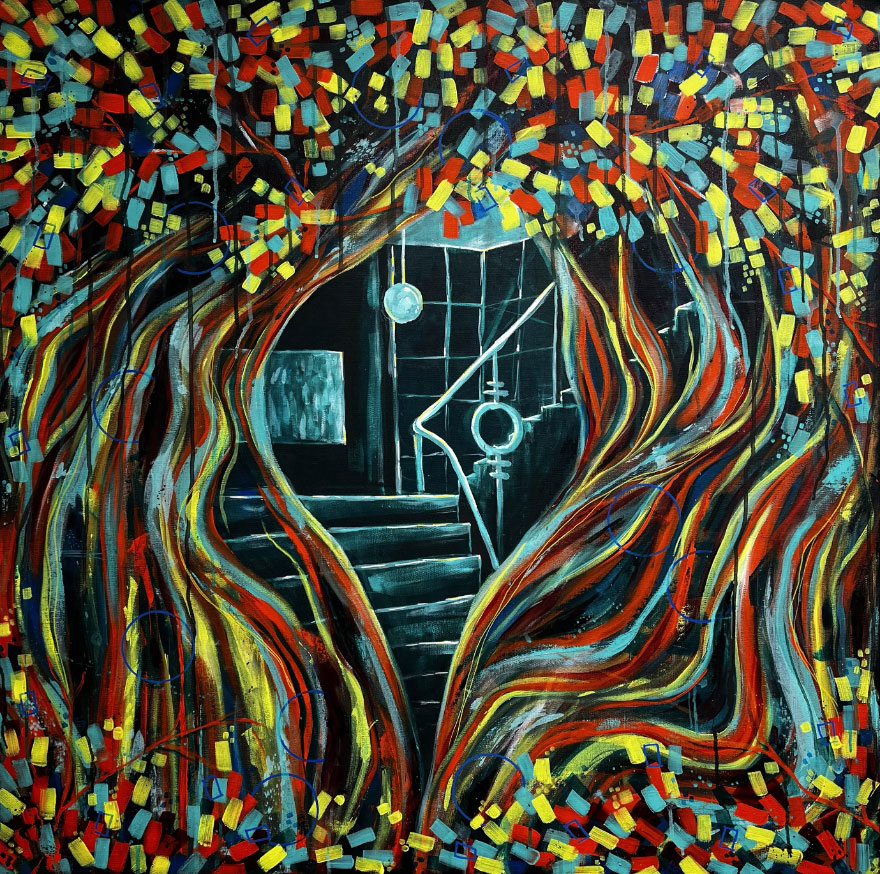
Lauren Husz ’26
ART 252: Painting: Traditonal to Digital Approaches
This piece was created during the collage workshop with Allison B. Allen and visiting Artist Delano Dunn. Using old record album covers and scrap material, Lauren puts the viewer in the audience of this unusual theatre, hinting at film, drama, and musicals all at the same time.
-Professor Mathew Kelly
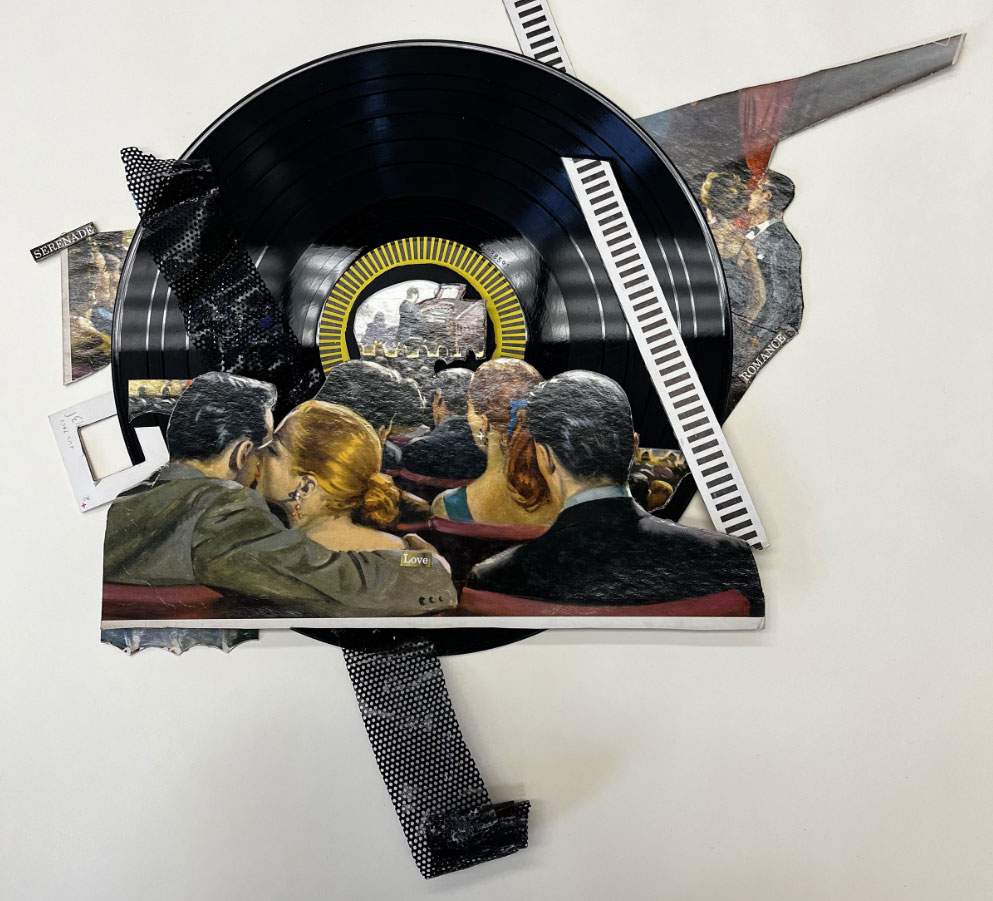
Sophie Kruger ’24
ART 252: Painting: Traditonal to Digital Approaches
This image was for the traditional still-life painting project where students were to mix the colors they saw in the still-life as closely as possible with a limited palette. This image captured the color shifts in the reflections of the saxophone, while the distinct borders between colors throughout lean more toward graphic novel illustration. The absence of smooth transitions between all colors gives this image its artistic voice.
-Professor Mathew Kelly
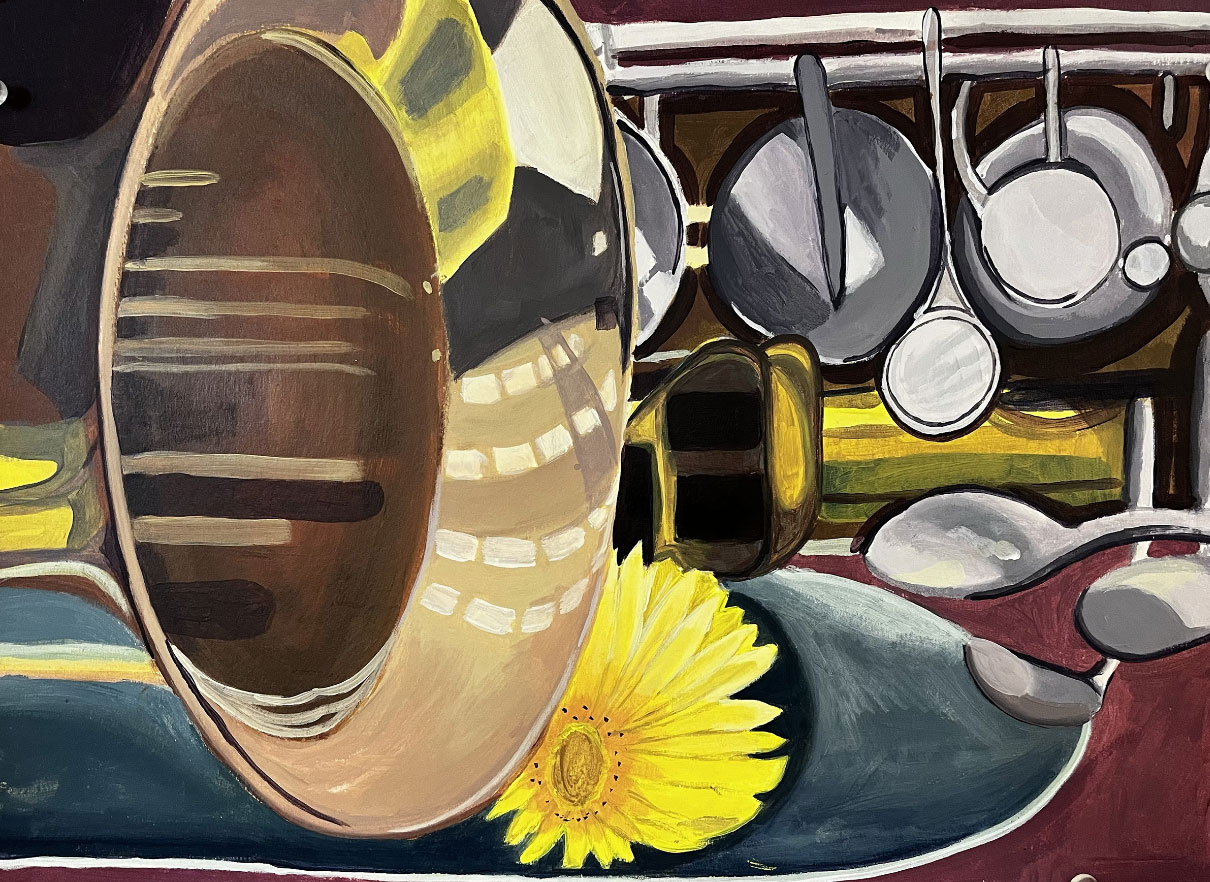
Madilynn Peitzman ’25
ART 262: Ceramics I
Project: Replicate a historical, slip-decorated vessel form and apply an original visual narrative about your interaction(s) with the world to its surface.
Madilynn’s design utilizes a good sense of movement around the bulbous vessel form and has some very nice sgraffito work done in creating the textures and patterns of the branches and birds.
-Professor Brian Roberts
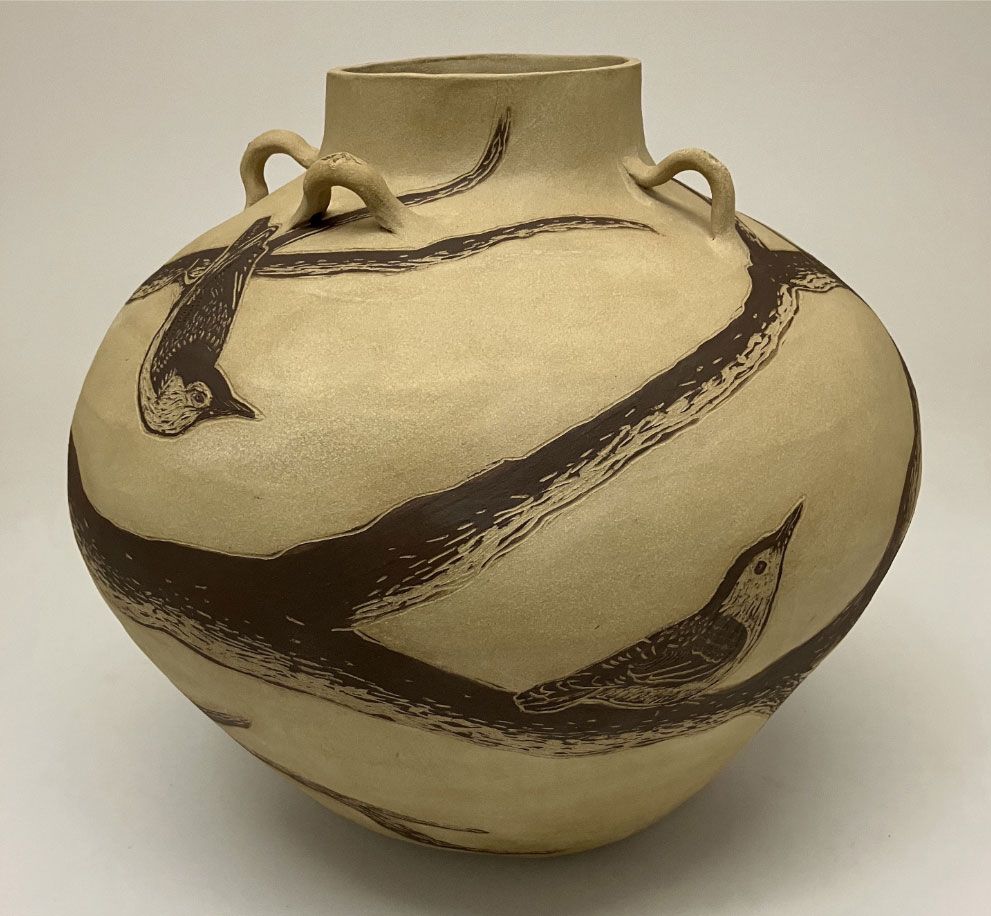
Rachel Barton ’26
ART 267: Metalsmithing I
Project: Create a goblet/chalice/pedestal bowl vessel form through the process of angle raising. The vessel form will have an angle-raised bowl/cup with a supporting structure to raise the bowl above the resting surface. This supporting structure can take the form of a stem and foot, pedestal format, sculptural configuration, or combination; soldering must be involved in the fabrication of the supporting structure, and the bowl must be attatched (soldered or cold-connected) to the supporting structure. The supporting structure can utilize nonferrous metals, as well as found objects and mixed media.
Rachel’s goblet has an original solution to form the “foot” and “stem” structuring as two sharks, an octopus, and an anchor interlock together.
-Professor Brian Roberts
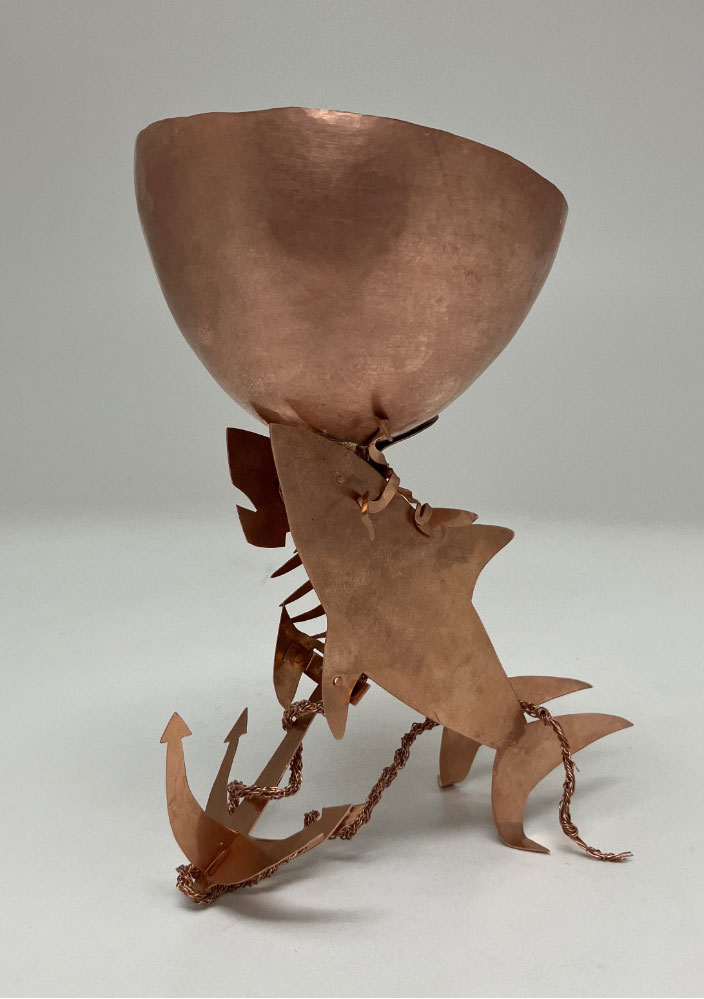
Amelia Brown ’25, Madilynn Peitzman ’25, Fynn Wadsworth ’25 (artists), Joceyln Timmerman ’24, Cassie Severson ’23 (grant writers), Kayla Lindquist ’25, Carley Underwood ’27, Madi Whalen ’26, Summer Chambers ’27, Jillian Fairbanks ’27, Jordan Helmick ’27, Alexis Hesse ’25 (installers)
This installation of bird strike decals on the Roe Center was a collaboration between students in the biology program and art program. Glancing at the top of the overhang at the entrance of the Roe Center, one can easily count upwards of 20 fatal collisions by birds against the windows. The decals prevent this from happening. Fynn, Madilynn, and Amelia saw the windows as a cabinet of curiosities. As suggested by Joceyln, they chose some objects related to the disciplines taught in Roe, and others related to the college in general. The dice are arranged to show the date Central College was founded, 1853, and the keychain has the zip code for Pella. This joint effort was, as Dr. Benedict said, “a simple way to help solve an environmental problem.”
-Professor Mathew Kelly and Dr. Russ Benedict

Amelia Brown ’25
ART 252: Painting: Traditonal to Digital Approaches
This was for the Slap-Dash assignment, in which students were to emphasize brush strokes and textures. Amelia chose to work on a three-foot square stretched canvas. The layers of color and brush stroke on this image created a physical texture on the surface enhancing the illusion of three-dimensional space while the flowing rope lines lead the viewer throughout the composition.
-Professor Mathew Kelly
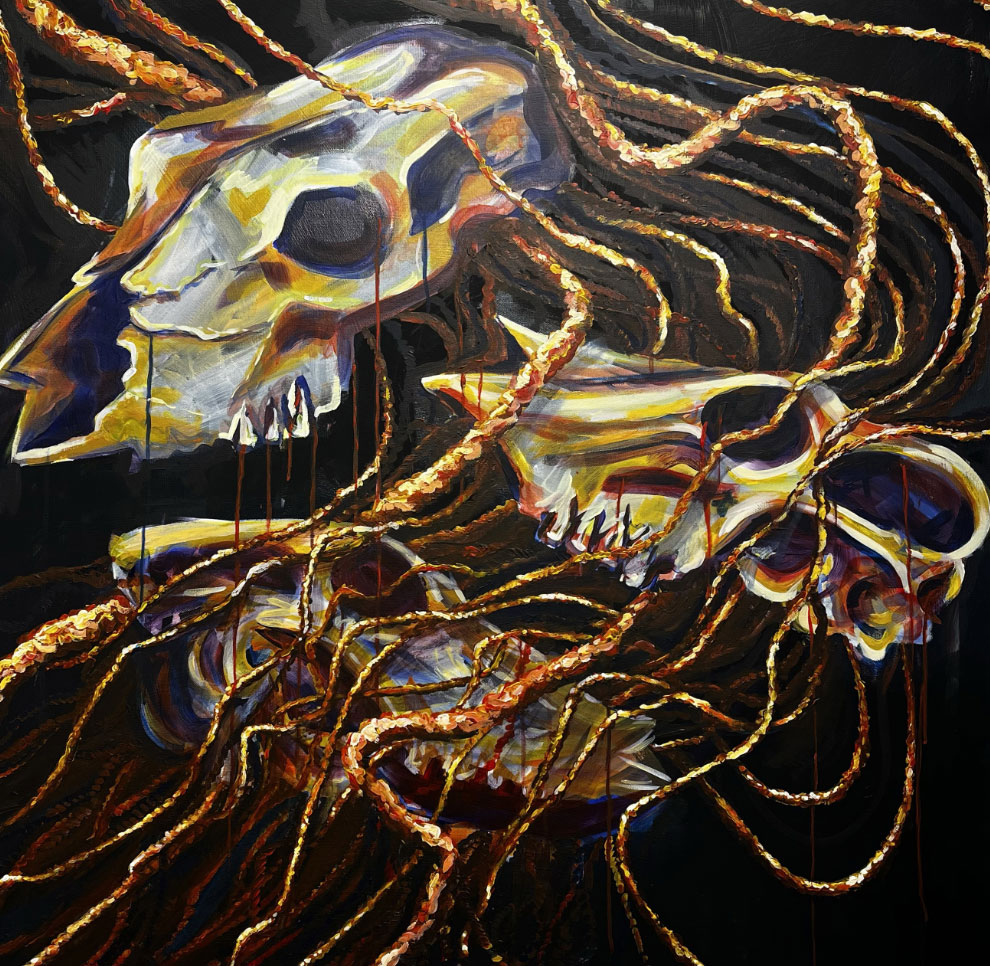
Amelia Brown ’25
ART 262: Ceramics I
Project: Introduction to throwing on the pottery wheel. The task requires that at least one drinking vessel has a sculptural shape, utilizing a cylindrical form.
I always ask students to consider the engagement with the user’s hand(s) and with their lips when making decisions about the potential of the cup. Here, Amelia sets up an interesting encounter for the user.
-Professor Brian Roberts
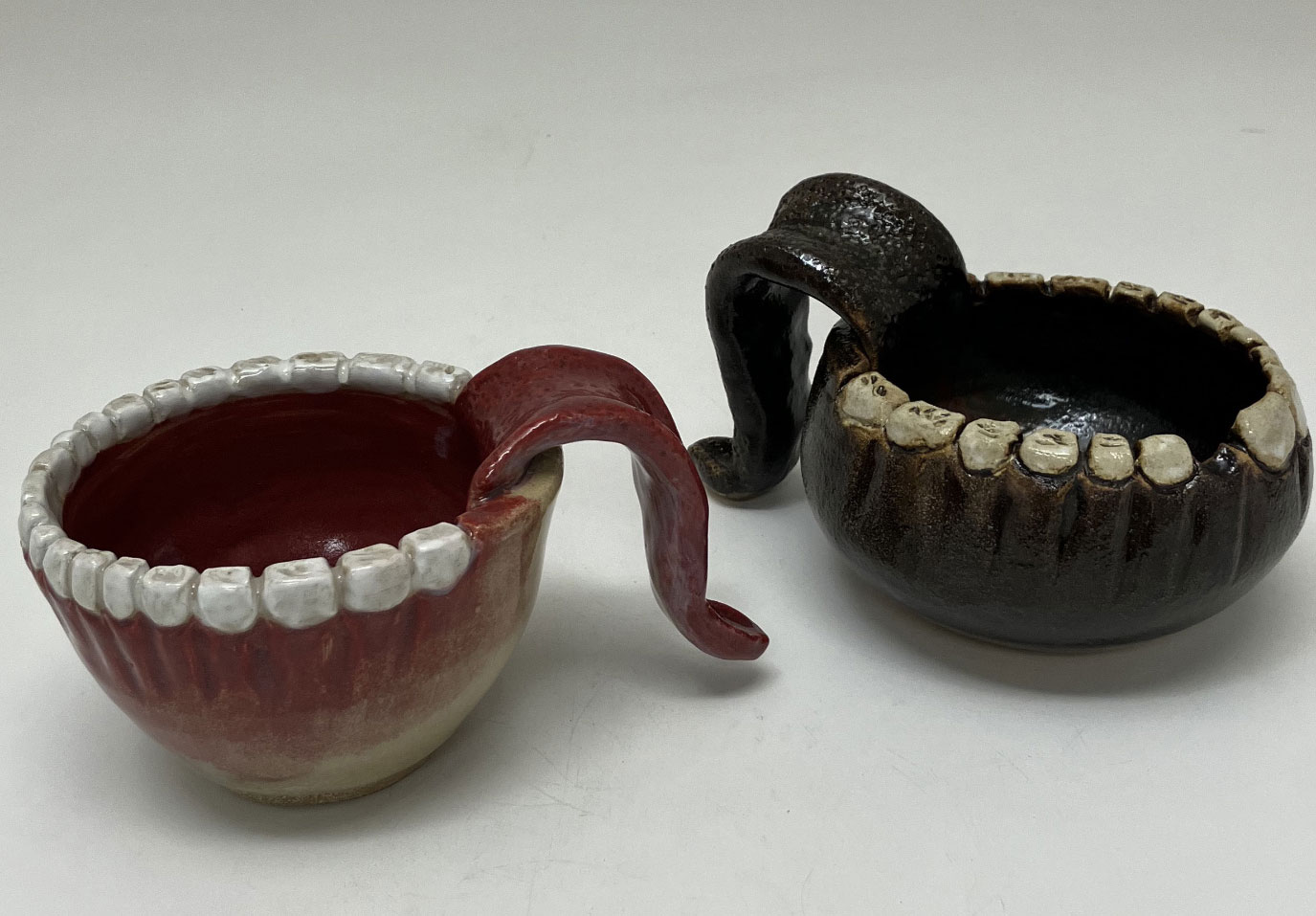
Amelia Brown ’25
THEA 280: Advanced Theatre Practice
In THEA 280 Advanced Theatre Practice, the final project is to complete a realized design in a live theatrical production and to create an organized book of research, paperwork, and images associated with the design and the process. Amelia successfully designed a 12-foot-tall puppet for the Mel Brooks Musical Young Frankenstein. The puppet design integrated elements from the costumes and the limited color palette in the scenery and props. The caricature of the monster’s face embraced the comedic elements of the musical and matched the exaggerated expressions of the performers. For the puppet to quickly appear and disappear on stage, the larger-than-life puppet required six puppeteers to operate four individual parts combined to make up the whole of the monster. Amelia received two awards through the Kennedy Center American College Theater Festival for the design and production of the puppet.
-Mr. Ron Rybkowski, Technical Director of Theatre

